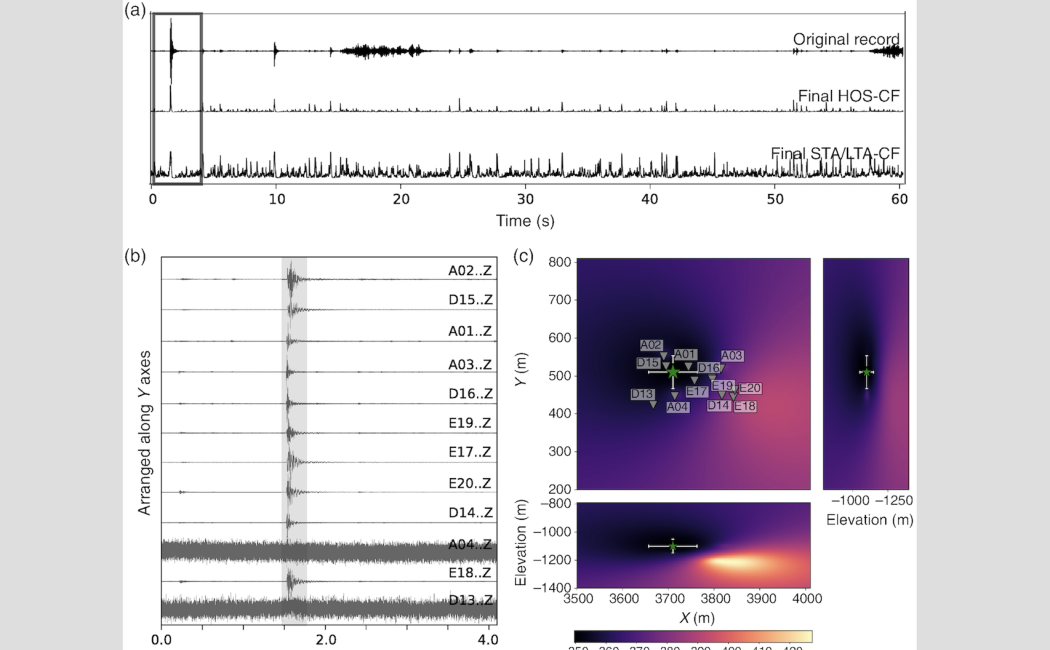


20 November, 2019
Recent studies have demonstrated the success of automatic full-waveform detection and location methods in analyzing and monitoring natural and induced seismicity. These approaches have been shown to provide a significant improvement in events detectability, increasing the significance of statistical analysis that permits to identify small changes of seismicity rates in space and time. Although currently nontrivial and by far nonstandard, application of such methods to seismic monitoring of active mines could significantly improve forecasting of potential destructive rockburst events. The main challenges of such applications are related to the presence of a wide range of seismic noise sources that have to do with mining activity and a high sampling rate of recorded data (several kHz), posing problems for real-time data transfer and processing. In this study, we propose an adapted full-waveform-based automatic method for the detection and location of microseismic events that makes use of continuous seismic records from an in-mine seismic network and can be adjusted to a near-real-time monitoring scheme. The method consists of two steps: (1) event extraction and amplitude ratio-based preliminary location and (2) event relocation using a coherency-based backprojection approach. The event extraction, based on multiband signal characterization implemented in the first step, allows us to overcome the challenge of high sampling rate data (8 kHz), reducing the overall volume of transferred data and providing an energy-based signal classification scheme. This allows us to remove a significant number of machinery noise sources. The technique is developed and tested on the case study of the Garpenberg mine (Sweden) monitored by a local seismic network that is maintained by Ineris. We demonstrate the improvement in event detection capacity by a factor of 50, compared with the standard triggered-based monitoring schemes. This increased number of detected microseismic events permits us to investigate the migration pattern of induced microseismicity that is generated in response to production blast.
Link to the paper: https://doi.org/10.1785/0220190074
Citation:
Kadek Hendrawan Palgunadi, Natalia Poiata, Jannes Kinscher, Pascal Bernard, Francesca De Santis, Isabelle Contrucci; Methodology for Full Waveform Near Real-Time Automatic Detection and Localization of Microseismic Events Using High (8 kHz) Sampling Rate Records in Mines: Application to the Garpenberg Mine (Sweden). Seismological Research Letters 2019;; 91 (1): 399–414.